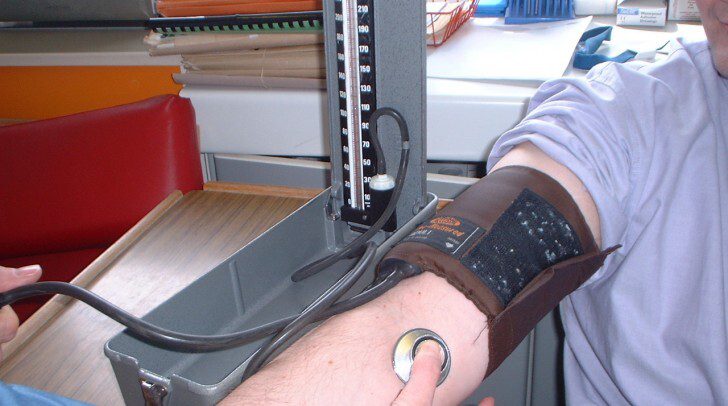By Kirk T. Harmon, M.D.
First published in Flight Levels Online, Fall 2014 issue

Is your blood pressure in the clouds? Elevated blood pressure (hypertension/pre-hypertension) is one of the most common reasons for visiting a health care provider. Furthermore, blood pressure increases with age; in fact, individuals who have normal blood pressure at age 55 will have a 90 percent lifetime risk of developing hypertension¹.
Often described as the “silent killer” or “the creeper,” it is insidious, often devoid of symptoms, but replete with risk. All pilots I know would not redline an engine, but often are willing to live with, or are unknowingly living with, the risks inherent with elevated blood pressure. These risks include cardiovascular disease (CVD), cerebrovascular disease (stroke of CVA), and kidney disease.
It’s important to know that the FAA recognizes the anxiety associated with an FAA medical exam, and consequently accepts a blood pressure up to 155/95 at the time of an FAA medical exam. So sit back and relax. Elevated blood pressure is treatable, and in my opinion should not be felt by pilots to jeopardize their careers.
Paramount in this discussion is the recognition of 1: normal blood pressure (less than 120 systolic –– the top number in your blood pressure reading, and 80 diastolic –– bottom number); 2: pre-hypertension (120-139 systolic and 80-89 diastolic); and 3: hypertension (140 or greater systolic and 90 or greater diastolic)².
The risks associated with ignoring hypertension and pre-hypertension can be profound. “The risk of cardiovascular disease (CVD) beginning at 115/75 mmHg doubles with each increment of 20/10 mmHg” that blood pressure increases³. Additionally, cerebrovascular disease (stroke) and renal disease have been clearly linked to elevated blood pressure.
While the initial treatment of hypertension and pre-hypertension is lifestyle management (weight loss, salt restriction, exercise), the main driver of hypertension is often genetic. If your mother or father had hypertension, medications will very likely be required to achieve a blood pressure in you that will consistently stay below 120/80.
The FAA has approved the vast majority of hypertension medications prescribed today. Initial therapy is typically one of the following medication types: thiazide-type diuretic; angiotensin-converting enzyme inhibitor (ACEI); angiotensin receptor blocker (ARB); or calcium channel blockers (CCB)). In most cases a second medication is required to obtain a blood pressure below 120/80. Often poorly understood is the synergistic (multiplier) effect of a thiazide-type diuretic in combination with an ACEI or ARB.
Pilots often equate the necessity of medication with “ill health.” A more appropriate mindset would be to consider medication a health care safety measure on the preflight check list of healthy living.
The earlier the age that one obtains a blood pressure of 120/80 the better. However, the older you are (over 50) the more likely it is for your health care provider to target your blood pressure to a higher range (130-150/80-90)⁴. Only you and your provider can precisely determine the target.
So, again, my advice is to sit back and relax. Don’t let your blood pressure climb into the clouds. Work with your provider to get your blood pressure where it should be, and don’t fret about your FAA medical exam. We can do this together.
1 Vasan RS, Beiser A, Seshadri S, et al. Residual lifetime risk for developing hypertension in middle-aged women and men: The Framingham Heart Study. JAMA. 2002;287:1003-10.
2 National Institute for Health and Human Services. JNC 7 Express. The Seventh Report of the Joint National Committee on Prevention, Detection, Evaluation, and Treatment of High Blood Pressure.
3 National Institute for Health and Human Services. JNC 7 Express. The Seventh Report of the Joint National Committee on Prevention, Detection, Evaluation, and Treatment of High Blood Pressure. Abstract. xiii
4 2014 Evidence-Based Guideline for the Management of High Blood Pressure in Adults. Report From the Panel Members Appointed to the Eighth Joint National Committee (JNC8). JAMA. 2014;311(5):507-520.doi:10.1001/jama.2013.284427. Published online December 18, 2013.
Dr. Kirk T. Harmon is an Aviation Medical Examiner and Medical Director of Multicare Centers of Occupational Medicine in Tacoma, Washington, and a former Flight Surgeon for the Alabama Air National Guard.
